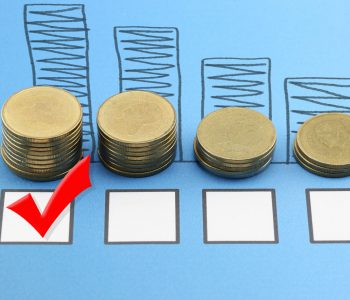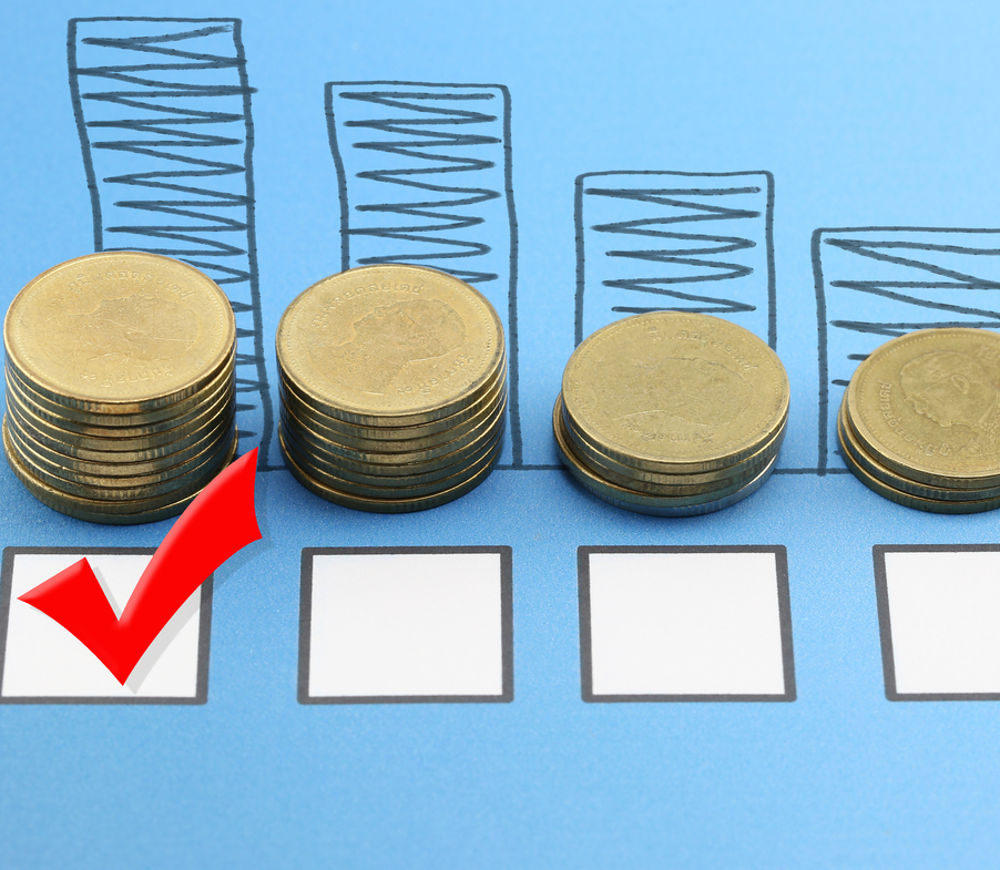What Are Preferred Shares?

Investing in Preferred Shares
Preferred shares are an investment that offers low volatility and steady income. The dividend yield on preferred shares is commonly higher than the common shares of the company. That said, preferred shares remain an asset class that is often overlooked by investors; some don’t even know the definition of preferred shares.
And I don’t blame them, as this type of investment can be complicated. However, whether you go in on preferred shares or not, this knowledge will prove useful.
The following information includes the answers to questions such as “what are preferred shares?,” “what are the advantages and disadvantages of investing in preferred shares?” and even “can you explain how to invest in preferred shares?”
What Are Preferred Shares?
A preferred share trades exactly like a stock does, except it has bond-like features, such as a fixed payment to investors and the possibility that the shares could be redeemed at a certain price.
A preferred share is an asset class–higher than common stock–offered by a corporation that is based onthe company’s assets and earnings. Preferred shares also have a dividend in place, which is normally paid on a monthly or quarterly basis. Preferred shares are priced at either $25.00, $50.00 or $100.00. Those are the issue prices and, in some cases, the maturity prices.
How Do Preferred Shares Work?
Preferred shares do not need to have a set date for when they must be bought back. However, the company does have the option to put parameters in place. For instance, if some preferred shares are not bought back within five years, they will continue to be traded on the markets. A company can issue multiple preferred shares at different times.
When the shares are bought back, it is at the previously mentioned issue price. However, there is one situation in which the shares could be bought back at a premium. Let’s say the company set a five-year period for buying back the preferred shares. If the shares are bought before the end of that five years, the company would have to pay a premium. The premium is also determined by the company before the shares begin trading.
When a preferred share is issued, a yield is attached to the investment. For example, an issuer may have a 5.5% yield on preferred shares issued at $25.00, which would result in an annual dividend of $1.375. This would be given to investors for the period that was agreed to, so long as the shares are trading.
There are two types of preferred shares that trade on the market: non-cumulative and cumulative preferred shares. Non-cumulative preferred shares are ones that pay a steady stream of income on the payment date. Cumulative preferred shares, meanwhile, use the company’s earnings to pay out the dividend. Missed dividends due to earnings being too low are paid once they become feasible again.
Advantages of Investing in Preferred Shares
Here are six advantages of investing in preferred shares.
1. Steady and Reliable Income
A preferred share will pay out a constant stream of income. There is essentially a contract in place stating that a certain dollar amount will be paid out until the shares are repurchased.
2. Tax-Advantaged Income
When it comes to investing in a company, there are three options: a bond investment, preferred shares, or common shares. Investing in a bond generates an interest income, which results in paying a higher tax rate on the income received. As for preferred and common shares, they pay out a dividend and are taxed at a lower rate.
Since bonds pay out a steady income as well, they are often compared to preferred shares. If both these investments paid the same yield, the preferred shares would make more sense, since less tax would be due.
3. High Probability of Income
If a company has both preferred shares and common shares, it must pay dividends on the preferred shares before any payment is made to common shareholders.
Also, if a company is struggling to pay a dividend on both types of shares, there is a higher probability of the dividend being cut or eliminated on the common shares before any dividend cut is made on the preferred shares.
4. Higher Claim on the Corporation Structure
There are times when a company is booming, only for it to go out of business not too long after. If a company did happen to file for bankruptcy, then preferred shareholders would claim any assets or money that is left before common shareholders get any compensation. There is a higher probability of receiving some, if not all, money back from the preferred-share investment.
5. Low Volatility
A big concern for investors is the daily price movement of their investments. The less daily movement in the price, the higher probability of preserving the capital in the investment. These are characteristics common to preferred shares.
6. Many Different Investment Options
Unlike common shares, there are many different types of preferred shares. The traditional ones that trade on the market feature a fixed payment on a quarterly or monthly basis, while others offer the possibility of earning a higher income linked to a benchmark interest rate.
Another possibility is a convertible preferred share, which gives the investor the ability to change the investment from preferred shares to common shares. This would give the option to own the common shares down the road and participate in the company’s success.
Lastly, there are participating preferred shares, which pay out a normal dividend. With these, it is possible to receive some of the earnings generated by the company in addition to the normal dividend.
Disadvantages of Investing in Preferred Shares
Here are three disadvantages of investing in preferred shares.
1. No Voting Rights
Common shares come with the ability to vote on corporate decisions based on the number of shares owned. Matters that they can impact include voting for a new board member, compensation benefits for executives, and decisions regarding mergers and acquisitions. In contrast, preferred shares don’t come with any such privilege.
2. Investment May Be Redeemed
Preferred shares may offer income, but there is always uncertainly from the shares being possibly repurchased by the company. If this occurs, then you would have to go through the trouble of finding another investment opportunity.
Another negative is that the repurchase of the shares could result in a capital gain, which means having to pay taxes. This gives the issuer of the preferred shares greater power.
3. Interest-Sensitive Investment
The price of preferred shares can, at times, have nothing to do with how strong the company is financially. Instead, the price will be based on both the current outlook and interest rates. If interest rates are high or moving in that direction, investors typically stay away from preferred shares, which could lead to a negative impact on the price. The opposite is true as well; a low interest rate means that preferred shares could perform well, based on the price movement.
Why Would a Company Issue Preferred Shares?
A company issues preferred shares for a number of reasons, ranging from needing capital for a project to having funds for an acquisition to just needing extra cash for regular operations.
Typically, a company issues debt in the form of a bond or equity when it comes to common shares; preferred shares are a mix between these two type of investment products.
The reason for this is that, when preferred shares are issued and capital is raised, it falls under the equity portion of the financial structure. The fixed income that is paid out by preferred shares would classify it as a bond investment.
When a company needs to raise money, it is solely in management’s hands which investment vehicle they would want to use. The number-one reason that a company issues preferred shares is based on the corporate financial structure of the company.
When a preferred share is issued over a bond, it is done so the debt doesn’t become a large burden, and the debt-to-equity (D/E) ratio is kept as low as possible. This ratio is the debt of the company divided by its total equity (common shares plus preferred shares). A lower D/E means that the company can borrow money at a lower rate and use a line of credit rather than issue a bond. A line of credit gives the company more flexibility when paying down the debt.
When there is an outstanding bond, the company is obligated to pay interest and, at a future date, return the principal investment. With a preferred share, the only obligation is to pay a dividend.
A management team would choose to issue preferred shares over common shares because it does not want to dilute shareholders. For instance, after a company’s initial public offering (IPO), there is always the option of issuing more common stock. This would negatively affect shareholders that currently own the shares of the company because a lower percentage of the company would be owned.
Here is a hypothetical example.
Let’s say you own 100 shares of a company which has 1,000 shares outstanding. This would mean that you own 10% of the company. And if that company happened to issue another 1,000 shares, making 2,000 total, you would now own five percent of the business. Since going from 10% to five percent would have a negative impact on your net worth, companies issue preferred shares in order to maintain shareholder satisfaction.
Another reason why a company issues preferred shares over common shares is the aforementioned lack of voting rights. If more common shares were to be issued, there could be a loss of control of the company. In fact, a single major shareholder could end up making the decisions for the company and pushing it in a new and vastly different direction. As a result, preferred shares are used so this loss of control does not become an issue down the line.
How to Buy Preferred Shares
There are two ways to get exposure to preferred shares. The first is to purchase preferred shares on an individual basis, similar to purchasing a stock on a major trading exchange. Once the preferred shares are owned, you can start to collect your dividend.
The second method is to purchase a portfolio of preferred shares by placing a single trade via an exchange-traded fund (ETF). This would provide exposure to the preferred-share market as well as income through a monthly or quarterly dividend.











